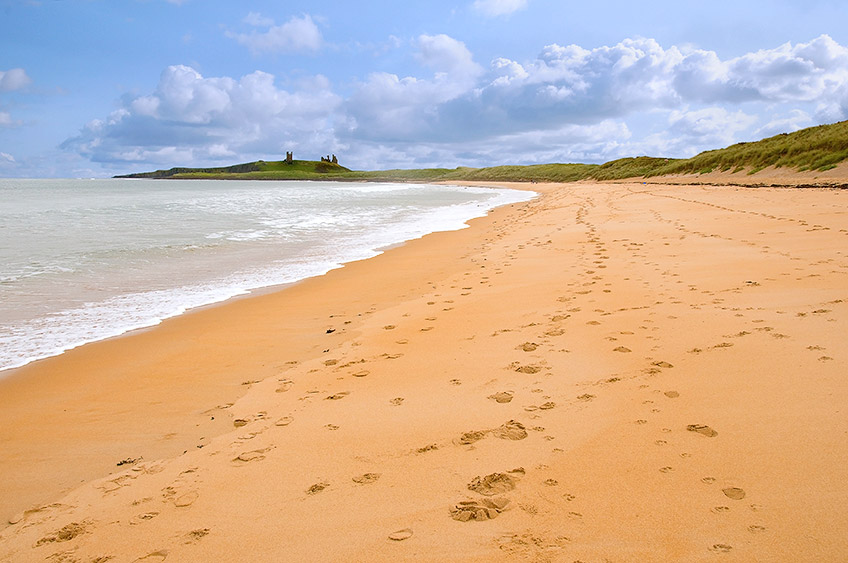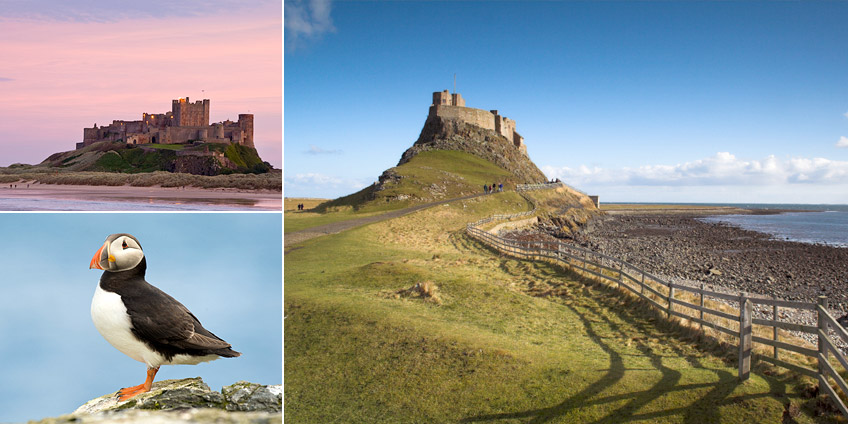Caravan County: Northumberland
 Northumberland is one of the largest, most distinctive of English Counties, which forms over half the land border with Scotland to the north. This county contains spectacular coast and countryside and fascinating market towns that other parts of England would love to possess...
Northumberland is one of the largest, most distinctive of English Counties, which forms over half the land border with Scotland to the north. This county contains spectacular coast and countryside and fascinating market towns that other parts of England would love to possess...
Coming from the south, Northumberland begins on the northern fringe of the greater Newcastle-upon-Tyne. Beyond the former ‘new town’ of Cramlington, next up is Morpeth, an attractive centre to the west of the old coalmining areas around Ashington and Newbiggin-by-the-Sea. From here, it’s quite a journey northwards, to Alnwick, across the River Tweed at Berwick and over the border to Lamberton and beyond. Inland, to the west, lies some of England’s highest uplands – the remote, sparsely populated Cheviot Hills, the Northumberland National Park, substantial areas of Ministry of Defence training estate (the Otterburn Ranges) and the World Heritage Site of Hadrian’s Wall.
Northumberland’s coastline runs for over eighty miles from Seaton Sluice, Tynemouth in the south, to Marshall Meadows Bay on the North Northumberland Heritage Coast, just above Berwick. A sprinkling of offshore islands adds further interest. In some parts, like around Blyth, this coast has become somewhat degraded by former industrial activity. In others, around the Farne Islands, Craster and the unique Holy Island, much remains very traditional and just about as ‘pristine’ as one could expect to find for a local environment anywhere in the UK.
You won’t be short on places to visit in the county - Lindisfarne Priory, the well preserved town ramparts at Berwick, Bamburgh, Dunstanburgh and Alnwick Castle (lately famed as a film-set for ‘Harry Potter’ movies), Kielder Water and the roman forts at Housesteads and Vindolanda are possibly the most well-known Northumberland tourist destinations. However, you can still lose yourself completely up here, even in high season. Enjoy what the ‘Open Roads’ website refers to as “an unequalled sense of freedom”, at places such as Alnmouth Bay on the coast, or inland, almost anywhere within the southern Border Forest Park, or up on The Cheviot itself (at 816 metres, the high-point of the county), just two miles from the Scottish border and the upland fells that roll westwards to Jedburgh.
 Around sixty official nature reserves are available to view by the public, each with special ecological characteristics. Some contain ‘showcase species’ - such as the otter and red squirrel. These sites, together with the National Park, the extensive Heritage Coastline, the Border Forest Park, (partly shared with Scotland), all combine to demonstrate the impressive environmental qualities of this part of the UK.
Around sixty official nature reserves are available to view by the public, each with special ecological characteristics. Some contain ‘showcase species’ - such as the otter and red squirrel. These sites, together with the National Park, the extensive Heritage Coastline, the Border Forest Park, (partly shared with Scotland), all combine to demonstrate the impressive environmental qualities of this part of the UK.
The county hosts a large number of holiday caravan parks in coastal and inland locations.
Sources of Further Information:
Visits to Northumberland are greatly enhanced by reference to one or more of nine Tourist Information Centres. These include Alnwick, Amble, Berwick-upon-Tweed, Corbridge, Craster, Hexham, Morpeth, Otterburn and Rothbury. Amble, Craster and Rothbury are seasonal offices, usually open for the Easter to October period. All others are available throughout the year and contain a wealth of material to support the leisure-time visitor, whatever their preferred interests and activities may be...
Tourist Information Centre details
www.information-britain.co.uk
Tour North East England
www.visitnortheastengland.com
Northumberland Wildlife Trust
www.nwt.org.co.uk
